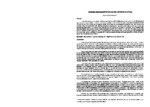Please use this identifier to cite or link to this item:
http://www.alice.cnptia.embrapa.br/alice/handle/doc/577653| Title: | Pesticide bioconcentration factor estimate in apples. |
| Authors: | PARAIBA, L. C.  |
| Affiliation: | LOURIVAL COSTA PARAIBA, CNPMA. |
| Date Issued: | 2009 |
| Citation: | In: FRUIT, NUT AND VEGETABLE PRODUCTION ENGINEERING SYMPOSIUM, 8., 2009, Concepción, Chile. Frutic Chile 2009. Proceedings... Chillán: Progap, 2009. |
| Pages: | p. 517-523 |
| Description: | This work objective was to estimate the bioconcentration factor (BCF) of thirty six pesticides used in the Brazilian integrated apple production systems (IAP), in order to select priority pesticides to be monitored in apples. A hypothetical apple orchard was assumed and the model applied was according to Paraíba (2007) [Pesticide bioconcentration modeling for fruit trees. Chemosphere (66:1468-1475)]. The model relates BCF with plant and pesticide characteristics. The octanol-water partition coefficients of pesticides and their degradation rates in the soil were used. The following plant variables were considered: growth rate, total dry biomass, daily water transpiration rate, and total volume of water necessary to produce one kg of fresh fruit per plant. The pesticide stem-water partition coefficient and the transpiration stream concentration factor were calculated using equations that relate each coefficient with the octanol-water partition coefficient. The pesticide BCF in fruits is an important indicator of the pesticide affinity to fruits, and helps to improve the integrated production systems. |
| Thesagro: | Maçã Produção Integrada |
| Type of Material: | Artigo em anais e proceedings |
| Access: | openAccess |
| Appears in Collections: | Artigo em anais de congresso (CNPMA)  |
Files in This Item:
| File | Description | Size | Format | |
|---|---|---|---|---|
| 2009AA068.pdf | 3,57 MB | Adobe PDF |  View/Open |









